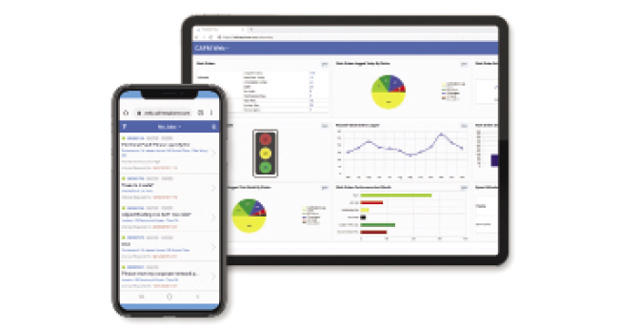Facilities managers understand the value of innovative tech but 62 per cent remain tied to spreadsheets, according to a new survey from Idox, a leading developer of specialist Computer-aided Facility Management (CAFM) software. The new research identifies how Facilities Management (FM) roles are evolving in light of Covid-19, changing work patterns and innovation, and the challenges that see some professionals sticking with manual, inflexible administrative processes.
Covid-19 continues to have an impact on working patterns and with the future still not set, facilities managers face complex challenges in catering for employees and remaining compliant, the two responsibilities respondents see as most important (75 per cent).
Prior to the pandemic, the FM sector was under pressure to perform at higher service levels with fewer resources. This has intensified, with 62 per cent citing budget constraints as their biggest concern. This is followed by changing working patterns and a reduced demand for space.
It’s also clear that FM is shifting away from traditional asset management to supporting the health and wellbeing of employees. 75 per cent feel that ‘increasing employee satisfaction and wellbeing’ is one of their most helpful roles in delivering their organisation’s strategic goals; ranking top alongside ‘controlling compliance risks’ (75 per cent).
Looking deeper into sustainability, FM has a critical role in helping organisations to achieve environmental, social and governance (ESG) objectives. ‘Improving the energy efficiency of buildings’ (70%), ‘reducing waste and increasing recycling’ (70 per cent) and ‘supporting social value strategies’ (5 per cent) are considered among the most strategically important responsibilities of facilities managers today.
The role of CAFM technology
CAFM technology streamlines processes and drives value across organisations. FM professionals are aware of this, ranking ‘driving efficiency’ (68 per cent), ‘digital innovation’ (43 per cent), ‘ensuring safety’ (40%) and ‘saving money’ (39 per cent) as the top four factors to consider when looking to invest in relevant tools. Aiding flexibility and response times are also seen as vital, so ‘mobile working’ (68 per cent) and ‘cloud-based solutions’ (60 per cent) are viewed as technology priorities.
Almost 80 per cent agree that security is the top priority, tying in with the aforementioned ‘controlling compliance risks’ responsibility. With regulations threatening heavy fines, there is pressure on FM teams to deliver and this could be a reason why 62 per cent still rely on manual spreadsheets in some capacity. They’re tried, tested and familiar, but they don’t scale easily and require lots of manual admin, factors that can eventually lead to non-compliance. In fact, only just over half (53 per cent) use any form of CAFM software.
Even with the lack of CAFM specific technology in use, there is an understanding of how the Internet of Things (IoT) can help facilities managers to better control operations through the use of connected devices. Around half feel that any CAFM technology should be IoT-compatible.
However, only 4 per cent feel that machines and automation will have an impact on their roles in the next 12 months. That’s despite automation having enormous potential for improving facilities maintenance and supporting productivity, helping to drive efficiency, innovation and safety – the three priorities considered when thinking about CAFM technology investment.
Oliver Spires, Product Manager at Idox comments on the findings: “The pandemic has created a lot of uncertainty and as we continue to work out what the future landscape looks like, it’s often the FM team that are asked to help plan while continuing to support employees and the business’ commercial and ESG objectives. Shouldering such responsibility means they should be equipped with the right technology, yet two thirds are still reliant on spreadsheets and manual processes. It’s time to upgrade.
“CAFM technology covers a comprehensive range of tools which help with all aspects of the modern FM role. Businesses are hungry for data about the performance of the workplace and how it can be made to operate better. Providing FM professionals with the right tools will empower them with greater oversight and control, enabling them to act more quickly and support their organisation’s evolving strategic goals.”
To read the full whitepaper ‘Trends and challenges in a changing landscape: A survey of facilities management’, which includes further analysis and additional findings, click here.





